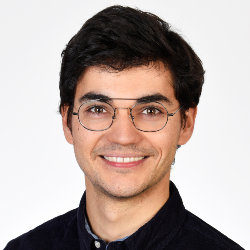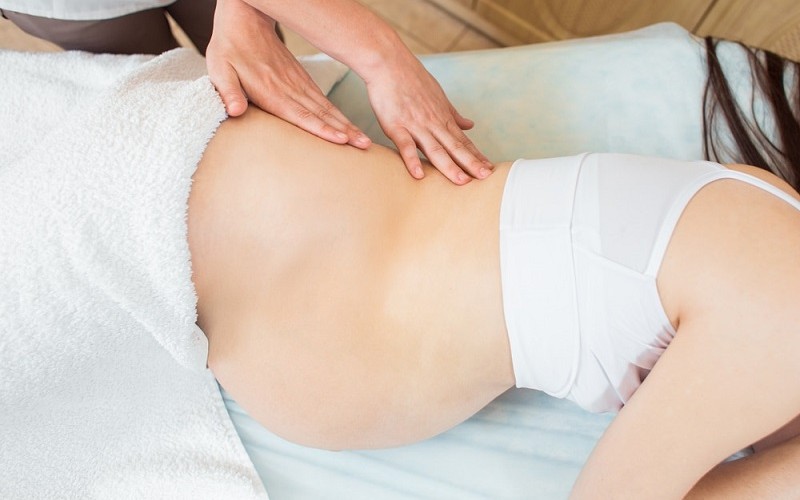Rééducation vestibulaire – Lausanne
Centre Philae
Bienvenue dans notre centre de physiothérapie spécialisé en rééducation vestibulaire à Lausanne !
Retrouvez votre Équilibre
Le système vestibulaire, situé dans l’oreille interne, joue un rôle essentiel dans notre capacité à maintenir l’équilibre et à percevoir notre position dans l’espace. Lorsqu’il est perturbé par des problèmes tels que des vertiges, des étourdissements ou une perte d’équilibre, cela peut avoir un impact significatif sur la vie
L’approche de la rééducation vestibulaire repose sur une évaluation approfondie de chaque patient pour comprendre la nature de leurs symptômes et identifier les problèmes sous-jacents. Cette évaluation permet de concevoir un programme de rééducation personnalisé en fonction des besoins spécifiques de chaque individu. Le traitement peut inclure une variété d’exercices et de techniques conçus pour stimuler et renforcer le système vestibulaire. Ces exercices peuvent impliquer des mouvements de tête, des changements de position du corps, des exercices d’oculomotricité (mouvements des yeux), ainsi que des exercices d’équilibre et de coordination.
Alexandre Dessert : Votre spécialiste en Rééducation Vestibulaire à Lausanne
Je m’appelle Alexandre, spécialisé en rééducation vestibulaire, je suis heureux de vous accueillir au centre Philae ! Passionné par mon travail, je vois chaque jour l’impact positif que cela peut avoir sur la vie de mes patients. Leur capacité à retrouver leur équilibre et à surmonter leurs symptômes est une source d’inspiration pour moi en tant que physiothérapeute.
Du Diagnostic au Rétablissement : Votre Parcours de Rééducation Vestibulaire Décrypté
La Rééducation Vestibulaire : Votre Alliée
Si vous êtes aux prises avec des problèmes vestibulaires, je vous encourage à consulter. Ensemble, nous pouvons travailler et vous aider à retrouver votre équilibre et vous permettre de mener une vie épanouie, exempte de vertiges et de gêne. La rééducation vestibulaire peut être le premier pas vers une meilleure qualité de vie.
L’Examen Initial : Un Regard Profond sur Votre Œil
J’examine votre œil attentivement dans un environnement obscur, en utilisant un masque de vidéonystagmoscopie. Ce dispositif permet d’évaluer de manière précise vos nystagmus. Le masque, connecté à un ordinateur, capture et enregistre la trajectoire du ou des nystagmus, ce qui facilite un diagnostic précis et une évaluation détaillée en fin de traitement, que nous pourrons partager avec votre médecin.
Le Fauteuil Rotatoire : Pivot de Votre Traitement
Pour la suite du traitement, vous serez confortablement installé sur un fauteuil rotatoire robuste et sécurisé. Grâce à différentes vitesses de rotation, ce fauteuil permet de traiter certaines crises vertigineuses en agissant directement sur votre réflexe vestibulo-oculaire. Il est également relié à un ordinateur qui recueille des informations essentielles, comme la position, le nombre de rotations, la vitesse angulaire et les accélérations.
La Manœuvre de Libération : Réajustement de l’Oreille Interne
Si des cristaux déplacés perturbent le fonctionnement de votre oreille interne, j’effectue une manœuvre de libération. Durant cette procédure, vous resterez assis sur la table de soin, pendant que je vous déplace rapidement d’un côté à l’autre pour remettre en place les cristaux.
Des Exercices Sur Mesure : Une Thérapie Complémentaire
En complément de ces traitements, je vous proposerai une série d’exercices thérapeutiques ciblés. Certains de ces exercices seront réalisés directement en cabinet, pour profiter de l’équipement spécialisé à disposition. J’utilise également des exercices simples, qui ne nécessitent pas de matériel spécifique, vous permettant ainsi de prolonger efficacement le traitement à la maison, entre les séances.
Votre Parcours Thérapeutique : Patience et Accompagnement
La rééducation vestibulaire est un processus progressif, et je suis là pour vous accompagner à chaque étape du chemin. Je vous encourage à faire preuve de patience et de persévérance, car l’amélioration peut prendre du temps. Mon objectif est de vous soutenir dans votre parcours vers une meilleure qualité de vie et une plus grande indépendance.
Votre physiothérapeute à Lausanne
Alexandre Dessert
Alexandre Dessert, thérapeute au Centre Philae, est spécialisé en rééducation vestibulaire depuis plus de 4 ans. Il a démarré sa formation en 2021 avec un cursus complet portant sur les vertiges et les instabilités. Poussé par le désir d’approfondir ses compétences, Alexandre a élargi ses connaissances par un Diplôme Universitaire (D.U.) en 2023-2024, suivi d’un Diplôme Inter-Universitaire (D.I.U.) en 2024-2025.
Au fil de ses formations, il a eu l’opportunité de découvrir des services spécialisés et d’échanger avec des médecins ORL, ce qui a enrichi sa pratique quotidienne. Alexandre continue à se former pour maintenir un haut niveau d’expertise et collabore régulièrement avec des médecins spécialisés dans le domaine.
Au Centre Philae, il dispose de tout l’équipement nécessaire pour réaliser un bilan précis et offrir une rééducation vestibulaire adaptée à vos besoins spécifiques.

Les vertiges et ses causes
Les raisons sont multiples, elles proviennent le plus souvent d’un dysfonctionnement d’une oreille et plus rarement d’une problématique du système centrale.
Le vertige positionnel paroxystique bénin :
Le plus courant (environ 40% des cas), des petits cristaux gênent le fonctionnement de l’oreille interne et provoquent des vertiges brefs (1 minute). Les vertiges recommencent à chaque changement de position. Ils durent moins d’un mois et ont tendance à se reproduire par le futur.
La maladie de Ménière :
Plus rare, elle représente environ 10% des cas. Les crises de vertiges s’accompagnent d’autres troubles (acouphène, surdité…) et durent quelques heures. Les épisodes vertigineux se reproduisent épisodiquement mais provoquent à la longue une usure du labyrinthe de l’oreille.
Les neuronites vestibulaires :
Rare environ 5% des cas ou le nerf vestibulaire est atteint. Cela correspond à des vertiges rotatoires intenses qui durent plusieurs jours. Cela a pour conséquence une instabilité importante.
Le neurinome de l’acoustique :
Très rare représente 1 à 2/1000 vertiges. Il s’agit d’une tumeur bénigne du nerf vestibulaire. L’évolution est lente, il n’y a pas de vertiges mais une surdité unilatérale qui évolue sur plusieurs années. La solution est chirurgicale, la rééducation de physiothérapie encadre la chirurgie.
Les vertiges d’origine centrale :
Environ 10 % des cas. Elles sont accompagnées de céphalées, de troubles visuels, et autres signes neurologiques. A traiter en urgence car elles peuvent mettre en jeu le diagnostic vital. Elles sont parfois révélatrices d’autres problématiques type maladies dégénératives, tumeurs…
Les vertiges fonctionnels d’origine central peuvent être aussi bénin, tels que :
- La prépondérance visuelle : souvent confondue avec l’agoraphobie, la rééducation offre de bons résultats.
- L’omission vestibulaire : présent principalement chez les personnes âgées, rapidement améliorée en rééducation.
- Les conflits sensoriels : provoque notamment le mal des transports, des vertiges d’altitude, les problématiques de « double tâche ».
Nos autres spécialités
Vous avez des vertiges, que faire ?
Il faut s’orienter vers votre médecin traitant et vers un médecin spécialiste des vertiges (médecin ORL ou neurologue).
Il effectuera un solide qui est indispensable et fondamental pour diagnostiquer la cause de vos vertiges
C’est quoi un bilan ORL ?
Il s’agit d’un examen clinique portant sur :
- Le mouvement de vos yeux,
- L’évaluation de votre équilibre,
- L’évaluation de vos oreilles,
- Et se termine par un examen neurologique.
Selon le résultat, le médecin peut demander des examens complémentaires :
- Audiométrique : mesure l’audition.
- Vestibulaire : examine le fonctionnement de l’oreille interne.
- Vidéo-nystagmographique : examine les mouvements oculaires anormaux.
- Vidéo-oculographique : étudie les voies centrales de l’oculomotricité.
Et après le bilan, quel traitement ?
- Le traitement médicamenteux
- Le médecin peut vous prescrire différents médicaments pour soulager les nausées, l’anxiété, ou pour diminuer vos vertiges.
- La rééducation vestibulaire de physiothérapie
- Un soutien psychologique (si les vertiges sont répétitifs)
- Le traitement chirurgical
Une évolution dans la prise en charge !
Il existe aujourd’hui une rééducation fonctionnelle des vertiges. Pour proposer ce soin, un physiothérapeute doit se former et se spécialiser dans la rééducation vestibulaire. C’est une grande avancée puisque nous sommes nombreux concernés par cette problématique. En effet, plus d’une personne sur vingt est touché par des vertiges au cours de sa vie et les récidives sont courantes. Il s’agit donc de libérer les symptômes mais aussi de connaître des outils à mettre en place si cela se reproduit. L’importance du thérapeute est donc primordiale, il vous apporte un soin et un accompagnement pour une reprise sécuritaire dans votre vie quotidienne (sport, travail, …).
Une prise en charge fonctionnelle !
C’est en 1980 que commence le début de la rééducation fonctionnelle. La manœuvre libératrice apporte enfin une solution efficace, elle soulage les patients et devient partie intégrante des soins proposés. Elle promouvoir à elle seule la nécessité d’une rééducation fonctionnelle.
Dans les mêmes années, les avancées se poursuivent en se focalisant non plus sur la technique pour libérer mais sur l’observation du patient. On développe ainsi le bilan thérapeutique individualisé. Il s’agit de tester le patient dans différentes situations et d’observer ses troubles vertigineux. Ceux-ci étant diffèrent selon chacun, leur diagnostique permet au thérapeute d’orienter et de cibler la thérapie.
Début du 20ieme siècle, grâce à l’avancée de la technologie, une machine se développe et nous permet de visualiser directement les déplacements oculaires spontanées. Cela est aujourd’hui essentiel pour le bilan thérapeutique et pour le soin. Il permet en temps réel d’analyser la problématique et de vérifier si les soins proposés sont efficaces.







